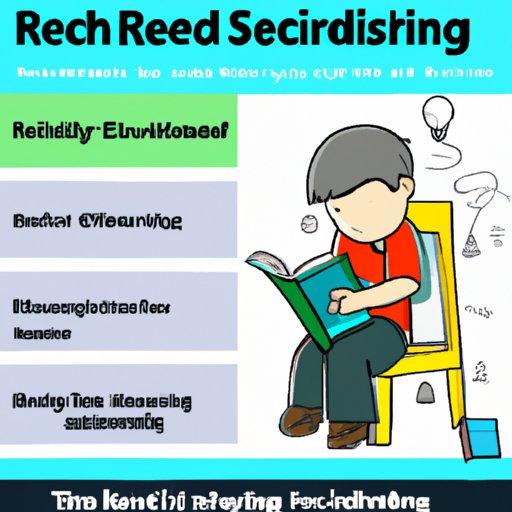Introduction
The science of reading approach is a framework that emphasizes the need to use evidence-based practices when teaching literacy skills. It focuses on understanding how children learn to read and comprehend text, and how educators can apply this knowledge to create effective instructional strategies. By utilizing a science of reading strategy, educators can ensure that students are receiving the best possible instruction for their particular needs.

A Definition of a Science of Reading Approach
The science of reading approach is based on research from experts in the field of reading and literacy. According to the International Dyslexia Association, “the science of reading is an evidence-based approach to reading instruction that uses the most current research about how people learn to read and write to develop effective interventions and instruction.” This approach focuses on helping students understand the structure of language and how it can be used to decode words, comprehend text, and develop critical thinking skills.

Overview of Benefits of Adopting a Science of Reading Strategy
Adopting a science of reading strategy has many potential benefits for educators and students alike. The International Dyslexia Association notes that this approach “emphasizes explicit instruction in phonemic awareness, phonics, fluency, vocabulary, and comprehension” which can lead to improved reading skills, greater retention of information, and enhanced critical thinking skills. Furthermore, by utilizing evidence-based practices, educators can ensure that their students are receiving the best possible instruction for their particular needs.

Exploring the Components of a Science of Reading Strategy
In order to effectively implement a science of reading approach, educators must first identify the key components of this framework. The National Institute for Literacy (NIFL) states that a science of reading strategy should focus on “phonemic awareness, phonics, fluency, vocabulary, and comprehension.” Each of these components plays an important role in the development of literacy skills, and it is essential for educators to understand how to effectively teach each one.
Examining Best Practices for Implementing a Science of Reading Methodology
Once educators have identified the key components of a science of reading strategy, they must then explore best practices for implementing this framework. According to NIFL, “evidence-based practices such as systematic and explicit instruction, frequent formative assessment, and differentiated instruction” should be used to ensure that students receive the best possible instruction for their individual needs. Furthermore, educators should strive to create a learning environment that is both supportive and engaging for students.
Investigating How to Implement a Science of Reading Methodology
When implementing a science of reading approach, educators must first establish clear goals and objectives for their students. This will help them create effective instructional strategies that are tailored to each student’s individual needs. Additionally, it is important for educators to utilize evidence-based practices when teaching literacy skills. According to the National Center on Improving Literacy, “evidence-based practices include using instructional materials and activities that have been proven to be effective in improving student achievement.”
Examining the Outcomes of Adopting a Science of Reading Framework
By utilizing a science of reading strategy, educators can help ensure that their students are receiving the best possible instruction for their particular needs. According to the National Center on Improving Literacy, adopting this approach can lead to increased achievement in reading, improved retention of information, and enhanced critical thinking skills. Additionally, this approach can help foster a positive learning environment where students feel supported and engaged.

Comparing Different Models of a Science of Reading Approach
There are several different models of a science of reading approach, each of which has its own unique elements and benefits. For example, the Balanced Literacy model emphasizes phonemic awareness, phonics, fluency, vocabulary, and comprehension, while the Response to Intervention (RTI) model focuses on providing targeted instruction to struggling readers. Additionally, the Guided Reading model utilizes small-group instruction to help students develop their reading skills.
Conclusion
Adopting a science of reading approach can provide numerous benefits for educators and students alike. This framework emphasizes the need to use evidence-based practices when teaching literacy skills and can lead to improved reading skills, greater retention of information, and enhanced critical thinking skills. Additionally, there are several different models of a science of reading approach, each of which has its own unique elements and benefits. In conclusion, utilizing a science of reading strategy can help ensure that students are receiving the best possible instruction for their particular needs.
(Note: Is this article not meeting your expectations? Do you have knowledge or insights to share? Unlock new opportunities and expand your reach by joining our authors team. Click Registration to join us and share your expertise with our readers.)
